Why Belgian vets are saying yes to objective gait analysis
Top Belgian equine veterinarians are clear: Objective gait analysis is becoming as essential as X-rays.

The second module of the 2024 EGAS course was held last weekend at the Tierklinik Lüsche in Germany. We caught up with three veterinarians and a physiotherapist to get the lowdown on the increased use of gait analysis and how longitudinal monitoring can improve client services and animal welfare.
- Michael Schoeberl (Stephansmuehle Medizinisches Pferdezentrum)
- Stijn Deturck (ViaNova Equine Services)
- Diana Landskron (Pferdetherapie Landskron/Utrecht University)
- Eoghan Nagle (Baker McVeigh, Newmarket)
This second module of EGAS gave participants insights into the following topics: Camera, sensor, and AI technology; high-quality data collection; and biomechanics of lame horses.
Stijn: For me, a key takeaway of today is that shoeing makes a massive difference in the forces. I know it makes a difference, but it was significantly greater than I anticipated. But above all, this second module has clarified how to interpret gait analysis data. I wouldn’t say I’ve mastered it, but I am more confident in looking at data output from the gait analysis systems.
Michael: I really like that you get a lot of interaction with other vets here. It’s a community, and it’s great to meet people from so many different countries. I’ve also really enjoyed meeting the younger vets. A lot has happened in the 30 years since I started practising; they are super bright! I appreciate the conversations here and the opportunity to learn from each other.
Diana: The change of lameness and compensation due to induced lameness on the hind to the front was interesting. You usually don’t have the comparison between the gait parameters of the horse being sound and the change in gait after lameness occurred in the same horse
Michael: Yes, this was a very systematic way of working out what’s happening. It’s the first time I've ever seen that.
And interestingly – what I thought would be right turned out to be wrong!
Diana: Another thing I found interesting was the clarification of withers displacement in
combination with hindlimb forelimb lameness that some systems show. You usually can’t
determine the changes in withers movement with the eye so good. Today we got
scientifically based data, with several research papers supporting it, to say in which
direction the compensation is going.
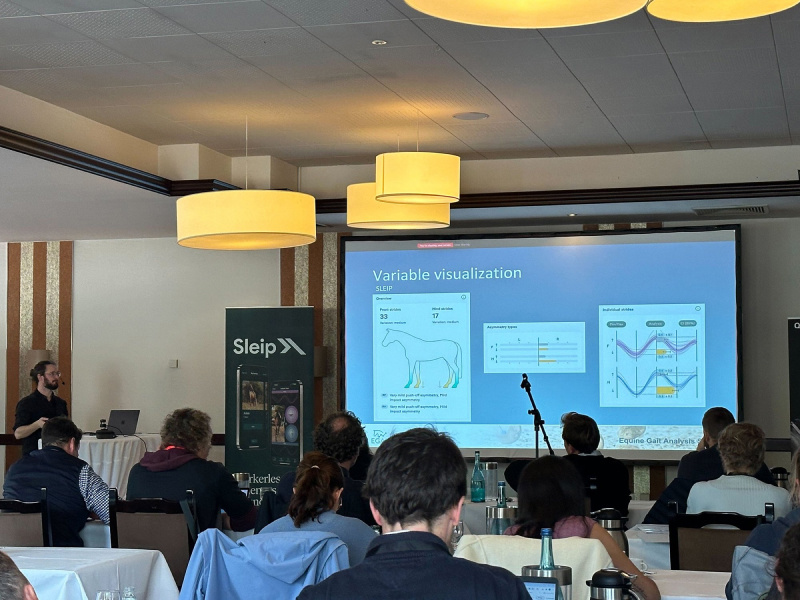
Sleip's Christoffer Roepstorff, biomechanics researcher, lectures on gait analysis data interpretation at the EGAS course.
Diana: Usually, you’ll get a person saying: “Ok, that is the compensation, based on my experience..” but there’s no good evidence supporting what they say. Objective gait analysis changes that.
Eoghan: Owner compliance, haha… No, but seriously, it depends on what the actual injury is. The main thing is to track the horse with regular checkups. If it’s something like a tendon injury, we will set a program to follow, and usually, before you increase the intensity, we’d re-scan the ligament and see how it looks.
Diana: For me, as a physio, it’s to bring the posture of the horse, or the muscle asymmetry, together with the diagnosis the vet has made. Understanding all those patterns – the compensation patterns – helps me to work that out better and to understand the asymmetry I am working with, compared to the asymmetry related to lameness.
Stijn: There is something very valuable about longitudinal monitoring, which will be possible with Sleip and maybe with the other systems going forward. That will provide a massive advantage. Also, with the Sleip app, you can have the owners and other people concerned with the horse’s health interact with you - to make remote recordings or share data.
Stijn: At the moment, I do get a lot of WhatsApp videos… And I try to interpret them. But a video like this, without measurements, is less useful, so I do a lot of in-person checkups. But I would love to spend a little less time driving to clients.
These remote recordings are also valuable among colleagues. Not every veterinarian is an orthopaedic specialist. I have a couple of vets who often refer to me, and it would be great if they could send objective data. Someone else's 1 out of 5 (on the lameness grade scale) is probably different from my 1 out of 5.
Michael: I’ve been using Sleip for a little over a year. I use it every day. I can’t remember the exact number, but I have measurements of nearly 300 horses. I introduce it to every new client and I measure every horse I’m following up.
Michael: With rehab, the point is not to make the horse symmetric; it’s to make the horse feel better. No horse - and no human - is going to be totally symmetric. If we look at all the top horses, they are generally uneven.
This is why I’m hesitant to share the gait analysis results with the clients. You can have treated it, and the horse is doing better, but if the Sleip analysis shows a leg as yellow, for instance, the owner likely interprets this asymmetry as something that needs to be fixed.
Stijn: Yeah.. This speaks to the “biological fingerprint” we saw in the presentation earlier today. Even if you measure them when sound, every horse has a specific movement pattern.
Stijn: I think in the future, every horse will get checked at a certain age and then regularly to establish that particular horse’s “normal” pattern.
In Belgium nowadays, all two-year-olds get an OCD set; you check for OCD fragments in the joints. Of course, the sets are limited, but people will keep these as reference values to compare findings on X-rays in the future. It will be the same with objective gait analysis.
The standard could be that you come to the clinic at three years old to perform an analysis to establish a baseline of the movement pattern, a biological fingerprint of your horse. Then, when you come to sell it, you can show the buyer the horse’s usual pattern.
Diana: The communication needs to improve on this topic though; what is asymmetry, and what is lameness? When is a horse lame, when is it just asymmetric? A lot of riders think that the horse needs to be perfectly symmetrical. But is that something we can achieve?
Stijn: It’s very good to know the biological function of the individual horse – its normal movement pattern – before it gets lame. That’s where the added value of the longitudinal monitoring is. If people can start monitoring their horses, they can send you videos regularly. If they have doubts or think something is off, you can easily compare it with the biological fingerprint, the baseline movement pattern at sound.
Ultimately, this monitoring creates more business for us because it will allow us to detect injuries sooner. In the long run, we’ll provide a better service and better animal welfare– I’m mostly triggered by that. That’s why Sleip will probably overrule the other systems - because of the user-friendliness. People love making videos! They love TikTok; they love WhatsApp!
Michael: I’m totally with you. I didn’t think about the biological fingerprint. But that is probably really the future.
Stijn: That’s why I’m doing this course; I want to develop this. Of course, I’m not going to do it by myself.
Michael: Why not?
Stijn: Haha, well, we need to make it mainstream within the horse business. And I think that’s where we’re heading. Like with the X-rays of 2-year-olds in Belgium, I mentioned before. Why not do the same with the biological fingerprint of motion analysis? It doesn't cost much, and you get a good overview. Probably, the money owners spend on that they’ll earn back ten times when they sell the horse. Perhaps the horse is a little asymmetrical, but it doesn’t mean it’s lame. And that is extremely valuable for the pre-purchase.
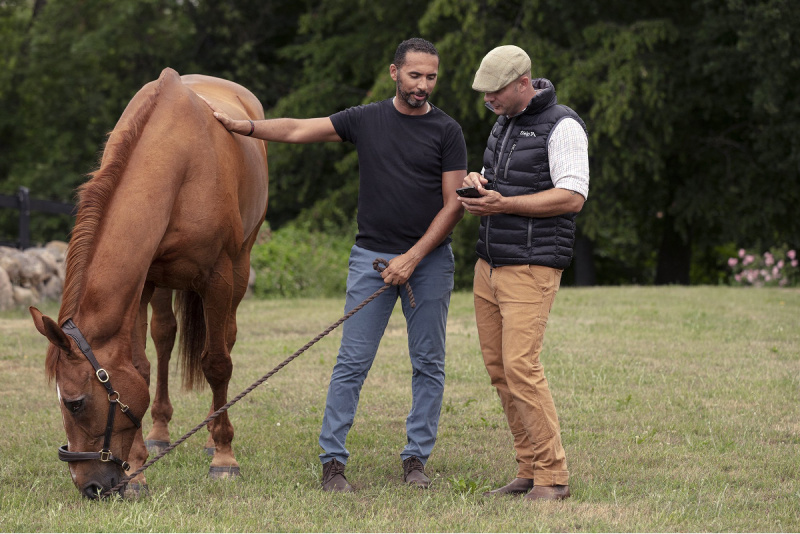
Establishing a horse's baseline movement pattern at sound, coupled with regular monitoring where horse owners can send analysis videos and data to their vets, makes a difference for client services and animal welfare.
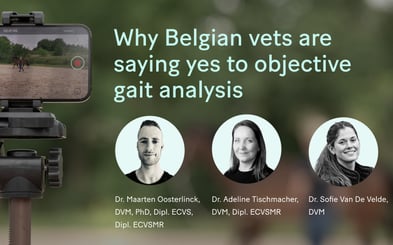
Top Belgian equine veterinarians are clear: Objective gait analysis is becoming as essential as X-rays.
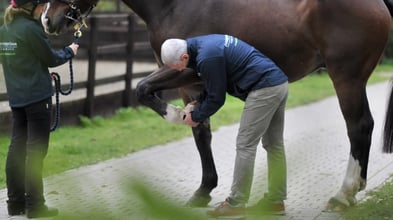
Giorgio Ricardi of Donnington Grove Equine Vets reveals how data-driven gait analysis enhances clinical decisions in complex lameness cases.
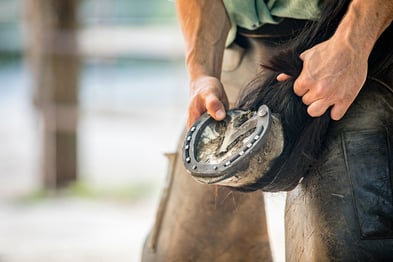
We sat down with UK Master Farrier Marc Jerram, who blends traditional skill with modern gait analysis to spot issues early and collaborate with vets on targeted solutions.